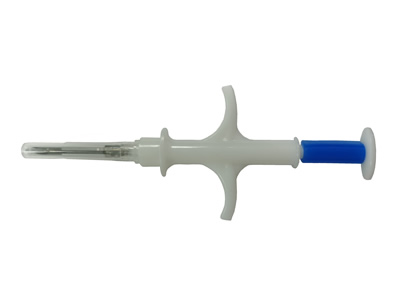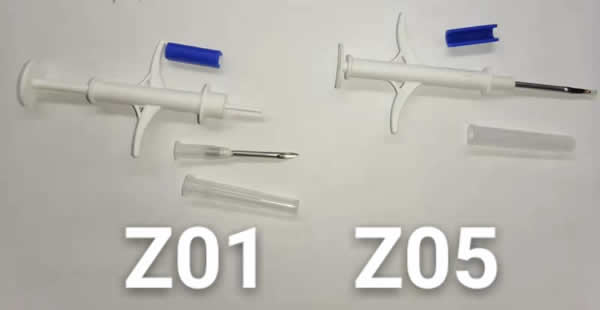

The microchip implant is an identifying integrated circuit placed under the skin of an animal. The chip, about the size of a large grain of rice, uses passive radio-frequency identification (RFID) technology, and is also known as a PIT (passive integrated transponder) tag. Standard pet microchips are typically 11-13 mm long (approximately 1⁄2 inch) and 2 mm in diameter.[1] Externally attached microchips such as RFID ear tags are commonly used to identify farm and ranch animals, . Some external microchips can be read with the same scanner used with implanted chips.
Chip Type:EM4305
Frequency: Standard: 134.2KHz, Option: LF 125KHz, HF 13.56MHz/NFC
Chip protocol:ISO11784/11785, FDX-B, FDX-A, HDX, NFC HF ISO14443A are availabe for option.
Chip size: standard 2.12*12mm, 1.4*8mm, 1.25*7mm Option: 2.12*8mm, 3*15mm, 4*32mm.
Reading standard:comply with ISO11784/5
Materials:biochemical coating, bio-grade glass encapsulation (antibacterial, antiallergic)
Certificate: ICAR Certificate.
Disinfection method:EO epoxy ethane.
Reading range: 7~15 cm
Reader area: all microchip syringe can be read.
Reader speed: when reader reading the chips quickly in 1 second.
| Syringe Model | Chip Size: 2.12*12mm | Chip Size: 1.4*8mm | Chip Size: 1.25*7mm |
| Z00 | Z00-2.12 | Z00-1.4 | Z00-1.25 |
| Z01 | Z01-2.12 | Z01-1.4 | Z01-1.25 |
| Z05 | Z05-2.12 | Z05-1.4 | Z05-1.25 |
what's the difference between Z01 and Z05
For Z01 microchip syringe, the needle can be dismantled.
For Z05 microchip syringe, the needle can not be dismantled.



 Pig Breeding
Pig Breeding Calf Rearing
Calf Rearing Cattle Breeding
Cattle Breeding Sheep Breeding
Sheep Breeding Dairy Farming
Dairy Farming Poultry Breeding
Poultry Breeding Rabbit Breeding
Rabbit Breeding Beekeeping
Beekeeping Continuous Syringe
Continuous Syringe Veterinary Syringe
Veterinary Syringe Veterinary Needle
Veterinary Needle Veterinary Drencher
Veterinary Drencher Surgery
Surgery Castration
Castration Infrared Heater
Infrared Heater Foot Care
Foot Care Water Bowls
Water Bowls Identification
Identification Pest Control
Pest Control Artificial Insemination
Artificial Insemination Clothing and Gloves
Clothing and Gloves Measures
Measures Laboratory Equipment
Laboratory Equipment